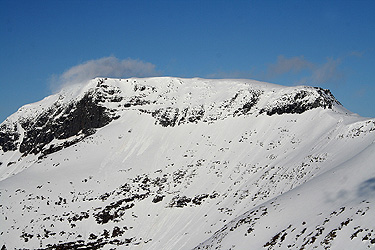Rostafjellet
- Rostafjellet
- 1558 m.
- Primary factor 728 m
- Location: North 69:02.976, East 019:38.402 (GPS at the summit)
- Difficulty: YDS class 2+
- Subsidiary summit Rostakulen, 1274 m, location N69:02.737, E019:33.815, pf= 84 meter.
- Climbed on June 2, 2008.
